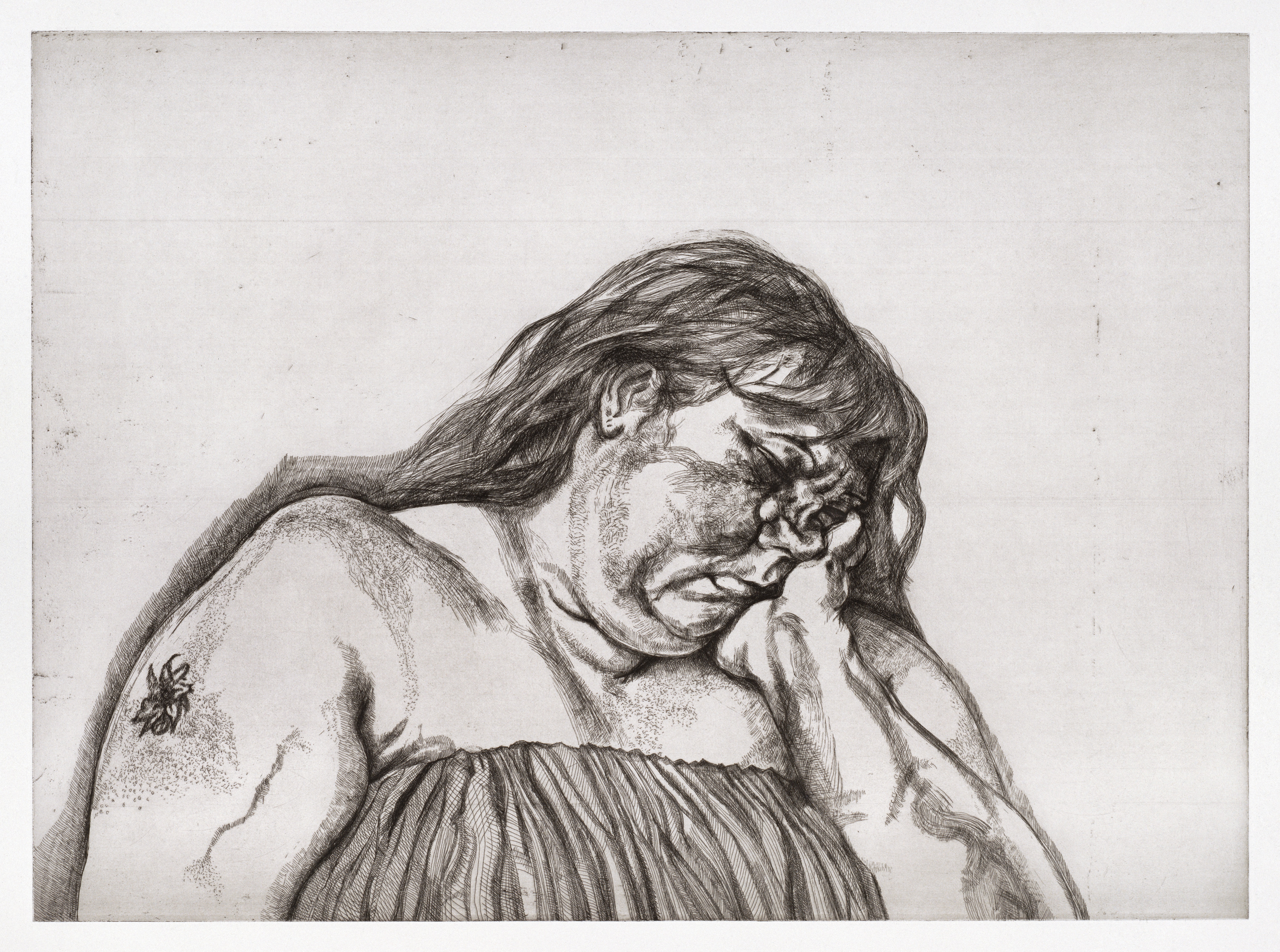The majority of his works were of people, often shown nude, with an intense concentration on the texture and color of flesh. His oeuvre includes images of men, women, fellow artists, family members, those on the outskirts of society, and celebrities ranging from the Queen of England to Kate Moss – all of which show the art of someone whose penetrating gaze could reveal the very soul of the sitter.
These are the portraits of British artist Lucian Freud (1922-2011), a grandson of Sigmund Freud who achieved international renown as one of the greatest painters of the 20th century.
Beginning Friday and running through April 19, The Fralin Museum of Art at the University of Virginia will host the exhibit, “Lucian Freud: Etchings.”
Freud exhibits of any sort are infrequent, so this will be a opportunity to experience the work of one of the most important artists of the post-World War II period.
For over seven decades, Freud has been widely celebrated for the powerful and moving portraits he made – and for his ability to buck trends in the art world to focus on one thing: the true nature of people. The current exhibit at The Fralin is an attempt to capture his special and intense focus.
Curated by Jennifer Farrell, associate curator of modern and contemporary prints and illustrated books at The Metropolitan Museum in New York and former curator of exhibitions and contemporary art at The Fralin, “Lucian Freud: Etchings” provides an in-depth look at the prints Freud made after returning to the medium in the 1980s.
In addition, the exhibition will feature a major portrait painting and etching of the same subject, demonstrating how Freud’s etchings complimented his oil paintings.
Created in an era dominated by abstraction and more conceptual practices, Freud’s depictions of the human form expanded and challenged the very idea of realist art, particularly in portraiture, and stretched its definition through Freud’s innovative style.
“Freud considered all of his works to be portraits, whether they were of people, his dog, photographs of Egyptian sculptures in a book, the view in his garden, or a painting by Chardin or Constable,” Farrell said.
“Freud also purported that all of his work was autobiographical and less about the subject than his reaction to the person or the object or the scene. In this way, he challenged and expanded the definition of what a portrait could be.”
Freud was best known for his portraits with oil paint. But The Fralin exhibit shows that he also produced an important body of prints, illustrating the critical place that printmaking, in particular etching, held for him throughout his career.
“Etching was a critical part of his oeuvre and in this exhibition, the viewer will be able to explore not only Freud’s portraits, but also the distinct and unique way in which he made etchings,” Farrell said.
“Lucian Freud: Etchings” examines the artist’s powerful and detailed depictions of the human form and the psychological conditions that characterized his oeuvre. In addition to a selection of nudes, the exhibition will feature a series of portraits of family members (ranging from his children to the artist’s dog), associates, models and muses, such as Australian artist and fashion designer Leigh Bowery, who frequently appeared in his art.
Also included are works that may be less familiar, such as landscapes and interpretations of Old Master works by artists, such as 18th-century French painter Jean-Baptiste-Siméon Chardin.
Together, the etchings in this exhibit show how Freud, through his masterful depictions of the human form, redefined portraiture in the world of 20th century art.
“Although Freud is celebrated as a virtuoso of the loaded brush, his etchings reveal another side of his unblinking study of human beings, animals and nature,” said Bruce Boucher, director of The Fralin. “His etchings push the boundaries of the medium, achieving a lushness like pastel or charcoal drawings. They remain in a league by themselves.”
The Fralin Museum of Art’s programming is made possible by the support of The Joseph and Robert Cornell Memorial Foundation. This exhibition is made possible by the support of Acquavella Galleries, The Fralin Museum of Art Volunteer Board, WTJU 91.1 FM, albemarle Magazine and Ivy Publications LLC’s Charlottesville Welcome Book.
Media Contact
Article Information
January 15, 2015
/content/uva-fralin-museum-art-exhibits-work-celebrated-portraitist-lucian-freud

